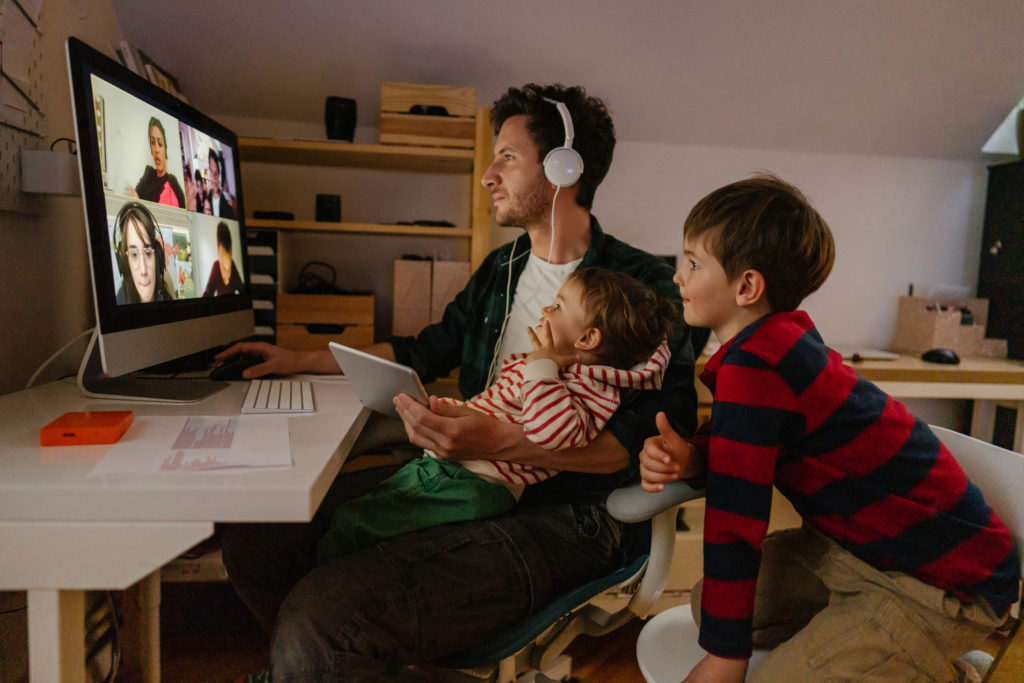Tips To Reduce Background Noise While Videoconferencing At Home
“Shelter-in-place” and similar agency orders and employer recommendations have many of us working indoors from home and relying on internet-based teleconferencing tools. Background noise from battling siblings, barking dogs and other equally noisy things can impact a video conference – as well as your nerves.
The need for good acoustical background conditions has become more important than ever to foster clear and effective communication. Below are four simple things from the Institute of Noise Control Engineering to help “lower the volume” and, maybe, your blood pressure.
1. Favor using a room with window drapes, a carpet or rug, and furniture. Porous fabrics have varying degrees of acoustical absorption, meaning they help diminish sound waves that would otherwise bounce around a “hard” room with smooth, reflective surfaces. The more material, such as pleats of window drapes that provide lots of surface area, the more sound can be absorbed.
2. Keep the pets and kids in other rooms, behind closed doors, if possible. This will help acoustically isolate your designated communication space, and thus lower its background noise level so that your voice, as well as what you hear through your technology’s speaker(s), will sound clearer and be more easily understood. Understandably, not everyone has the space at home to create a separate home office space but the more separate the space is from the source of the noise, the better.
3. Improve a room’s acoustical absorption. One way to dampen extraneous noise from impacting a videoconference is to hang a blanket or quilt behind you—not only will it provide some sound absorption, but it will also provide a background for the video.
4. Keep fans, air-conditioners, and other noise-makers at reasonable distances from your microphone. Summer’s coming so you’ll either open doors and windows for allowing natural ventilation, or close things up and rely on air conditioning. The former will let outdoor noise in and the latter introduces a seasonal noise to your interior space. Keep in mind that your smart-phone or computer microphone will likely pick up the sound from an operating fan or AC compressor if it’s too close. A simple test of your technology’s audio by asking people if they hear your fan or other cooling equipment will guide you to either turn down the fan or move it farther away from the microphone.
You don’t need to turn your bedroom into an audio recording studio and quarantine your children and the dog.
These four tips are simple and affordable adjustments you can make to your space while you are working at home to improve background acoustics and make it easier for your videoconference participants to communicate with you.
Also on Coast to Coast
-
Unpacking the Most Popular Video Games of the Holiday Season with Kia Malone
-
Episode 24 of Coast to Coast: Oscars Excitement & the Best of Sprouts with Nutritionist Cara Harbstreet
-
Monster Energy Celebrates the Launch of New Flavor in Venice
-
Coast to Coast Sets Sail on Royal Caribbean’s Icon of the Seas
-
Discovering Amazing Ways to Make a Splash at Disney’s Aulani Resort
